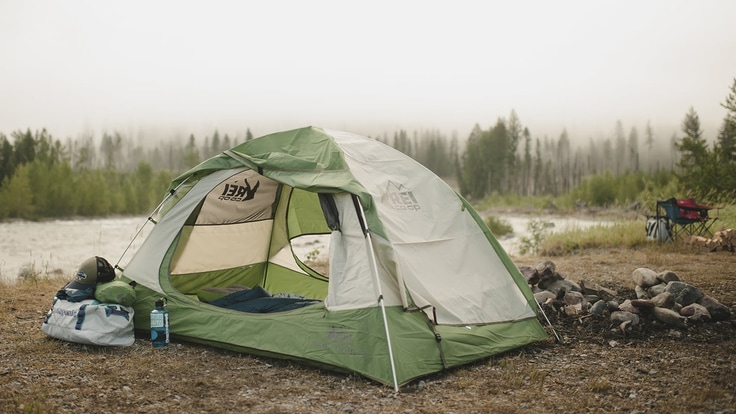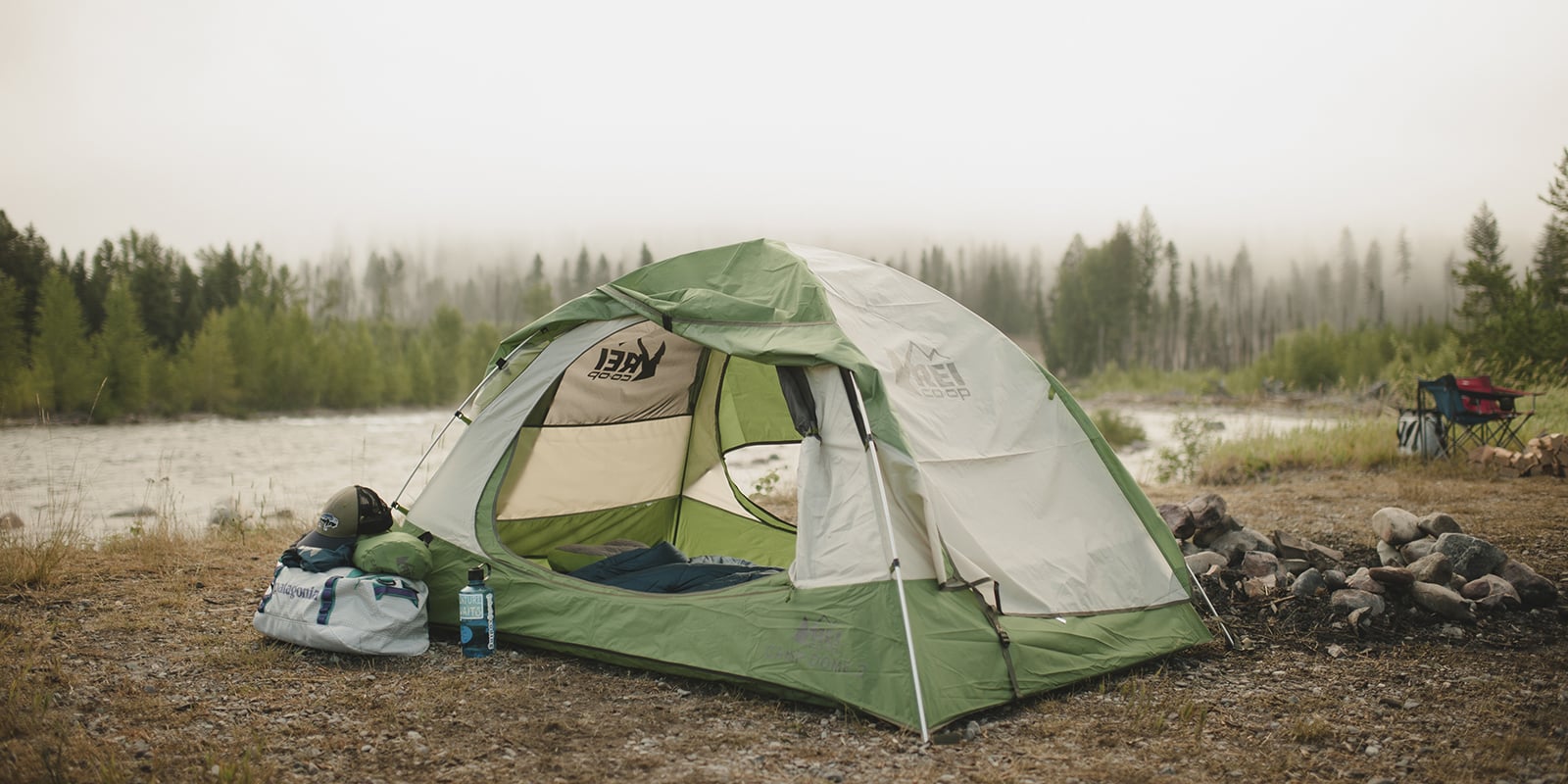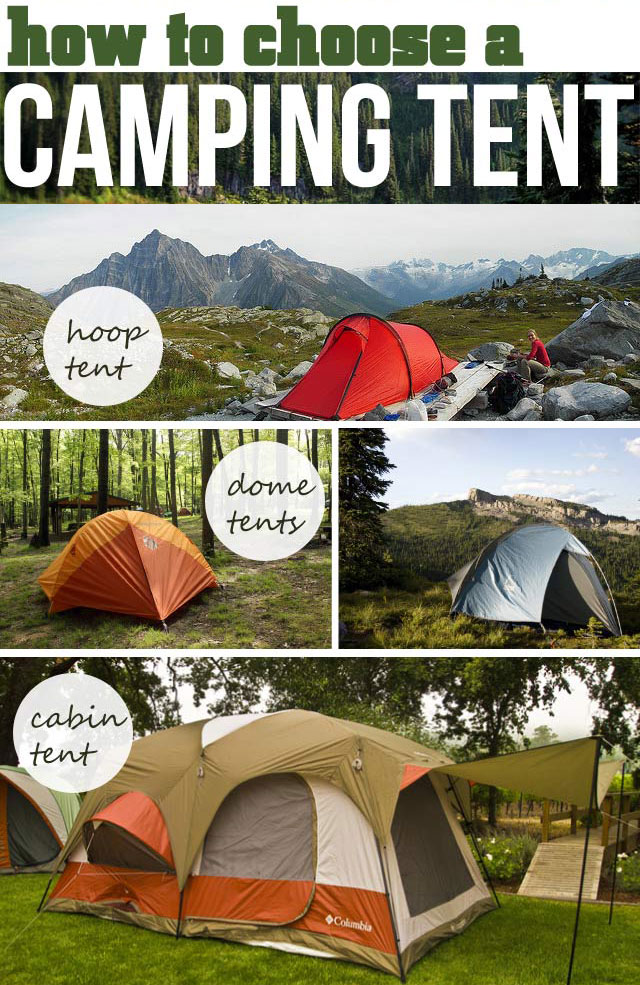Choosing a camping tent involves considering size, weather resistance, weight, and ease of setup. The right tent will depend on your specific camping needs, such as the number of people and the type of terrain you’ll be camping on.
It’s important to find a tent that can comfortably accommodate your group and provide protection from the elements. Additionally, you’ll want to consider the tent’s weight and ease of setup, as these factors can make a significant difference in your camping experience.
By carefully evaluating these aspects, you can select a camping tent that suits your requirements and enhances your outdoor adventures.
Table of Contents
Choosing The Right Size
Choosing the right size for a camping tent is crucial for a comfortable outdoor experience. Consider the number of people and gear to ensure ample space. Opt for a size that allows for movement and storage, while also factoring in the tent’s weight for easy transportation.
When it comes to choosing the right camping tent, one of the most important factors to consider is the size. Choosing a tent that is too small can be uncomfortable, while a tent that is too large can be difficult to set up and take down. Here are some tips to help you choose the right size tent for your camping needs.
Consider The Number Of Campers
The first step in choosing the right size tent is to consider the number of people who will be sleeping in the tent. For example, if you are camping alone, you may only need a one-person tent, while a family of four may need a larger tent that can accommodate everyone comfortably. Here is a breakdown of tent sizes based on the number of campers:
| Number of Campers | Tent Size |
|---|---|
| 1-2 | 1-2 person tent |
| 2-3 | 2-3 person tent |
| 3-4 | 4 person tent |
| 4-6 | 6 person tent |
| 6-8 | 8 person tent |
Look At The Interior Space
In addition to considering the number of campers, you should also look at the interior space of the tent. A tent that is advertised as a “4 person tent” may not actually be comfortable for four people if the interior space is cramped. Look for a tent with a spacious interior that allows everyone to sleep comfortably and have enough room to store their gear.
When choosing a camping tent, it’s important to choose the right size to ensure a comfortable and enjoyable camping experience. By considering the number of campers and the interior space of the tent, you can find a tent that meets your needs and provides a comfortable place to sleep and relax while you enjoy the great outdoors.
Understanding Tent Materials
Understanding tent materials is crucial when it comes to choosing the right camping tent. Different fabrics and coatings affect the tent’s durability, weather resistance, and breathability. In this guide, we’ll compare different fabric types and delve into the importance of waterproofing and breathability in ensuring a comfortable camping experience.
Comparing Different Fabric Types
When selecting a camping tent, it’s important to consider the fabric type. The most common materials used in tent construction are polyester, nylon, and canvas. Each material has its unique characteristics:
- Polyester: Lightweight and quick-drying, making it ideal for backpacking and hiking trips.
- Nylon: Offers excellent strength-to-weight ratio, making it durable and suitable for various weather conditions.
- Canvas: Known for its durability and breathability, making it a great choice for long-term camping or harsh weather conditions.
Understanding Waterproofing And Breathability
Waterproofing and breathability are essential features to consider when choosing a camping tent. The tent’s ability to keep you dry during rain and prevent condensation buildup is determined by these factors:
- Waterproofing: Look for tents with sealed seams, a waterproof rainfly, and a high hydrostatic head rating to ensure water doesn’t seep through the fabric.
- Breathability: Opt for tents with adequate ventilation, such as mesh panels and adjustable vents, to minimize condensation and enhance airflow.
Exploring Tent Designs
When choosing a camping tent, exploring tent designs is crucial to finding the right fit for your outdoor adventures. The design of a tent affects its stability, weight, and interior space, so understanding the different options available is essential. Let’s delve into the various tent designs to help you make an informed decision.
Freestanding Tents Vs. Non-freestanding Tents
Freestanding tents have a self-supporting structure, making them easy to pitch and move around. They typically feature a simple pole system and can be set up on various terrains, including hard surfaces. On the other hand, non-freestanding tents rely on stakes and guylines to hold their shape, requiring careful consideration of the camping site and weather conditions for proper setup.
Tunnel Tents, Dome Tents, And Geodesic Tents
Tunnel tents are elongated and offer ample interior space, making them suitable for group camping. Dome tents, with their rounded shape, provide excellent stability and wind resistance, making them ideal for harsh weather conditions. Geodesic tents feature a complex pole structure, enhancing their stability and strength, making them a preferred choice for expeditions and extreme weather conditions.

Credit: www.rei.com
Assessing Weather Resistance
When it comes to choosing a camping tent, one of the most important factors to consider is its weather resistance. You want a tent that can protect you from rain, wind, and other elements to ensure a comfortable and safe camping experience. Here are some things to keep in mind when evaluating a tent’s weather resistance.
Evaluating Wind And Rain Performance
One of the primary factors to consider when assessing a tent’s weather resistance is how well it can handle wind and rain. A good tent should be able to withstand strong winds without collapsing or being damaged, and it should be able to keep you dry even during heavy rain.
When evaluating a tent’s wind performance, look for features like a sturdy frame, guy lines, and tent stakes. These can help keep the tent stable and prevent it from collapsing in strong winds. Additionally, check the tent’s rainfly to ensure that it is waterproof and covers the entire tent, including the windows and doors.
Seasonal Suitability
Another important factor to consider when assessing a tent’s weather resistance is its seasonal suitability. Different tents are designed for different weather conditions, so it’s important to choose one that is appropriate for the season in which you will be camping.
For example, a three-season tent is suitable for spring, summer, and fall camping and can handle light rain and wind. A four-season tent, on the other hand, is designed for winter camping and can handle heavy snow and wind. Make sure to choose a tent that is appropriate for the season and weather conditions you will be facing.
Other Considerations
In addition to wind and rain performance and seasonal suitability, there are a few other things to keep in mind when assessing a tent’s weather resistance. These include:
- The tent’s shape: A dome-shaped tent is generally more wind-resistant than a cabin-shaped tent.
- The tent’s fabric: Look for high-quality, durable materials that can withstand rain and wind.
- The tent’s ventilation: Good ventilation can help prevent condensation buildup inside the tent, which can be uncomfortable and lead to dampness.
By considering these factors when choosing a camping tent, you can ensure that you stay comfortable and protected from the elements during your next camping trip.
Examining Tent Features
When choosing a camping tent, examining its features is crucial to ensure a comfortable and enjoyable outdoor experience. The tent’s features play a significant role in providing protection from the elements, offering comfort, and enhancing convenience during the camping trip. In this guide, we’ll delve into some essential tent features to consider before making a purchase.
Ventilation Options
Ventilation is a key factor to consider when selecting a camping tent. Adequate airflow helps prevent condensation and keeps the interior fresh. Look for tents with large mesh windows and adjustable vents to regulate airflow according to the weather conditions. Tents with multiple ventilation options are ideal for accommodating different climates and ensuring comfort during warm nights or rainy days.
Storage Pockets And Gear Lofts
Storage pockets and gear lofts are essential for keeping your camping essentials organized and easily accessible. Tents with interior pockets allow you to store personal items such as phones, flashlights, and other small gear, helping to keep the tent clutter-free. Additionally, gear lofts provide overhead storage for items like clothing or other lightweight gear, maximizing the use of the tent’s interior space.

Credit: www.rei.com
Considering Weight And Packability
Assessing Trail Weight Vs. Packaged Weight
Trail weight is the tent’s weight without extras, while packaged weight includes everything. Choose based on your needs.
Pack Size And Portability
Pack size matters for storage and transportation. Opt for a tent that fits compactly in your backpack.
Setting A Budget
When choosing a camping tent, setting a budget is crucial to ensure you get the best value for your money. Understanding price points and evaluating the value offered by different tents will help you make a well-informed decision.
Understanding Price Points
It’s essential to understand price points when selecting a camping tent. Consider your budget constraints and compare the features offered by tents in different price ranges to find the best fit for your needs.
Value For Money
When it comes to camping tents, value for money is key. Look beyond the price tag and assess the quality, durability, and features of the tent to ensure you are getting the most value for your investment.

Credit: nwtripfinder.com
Reading User Reviews
When choosing a camping tent, Reading User Reviews can provide valuable insights from real users. Here’s how to make the most of this resource:
Seeking Feedback On Durability
Durability is key when selecting a camping tent. Look for reviews that mention how well the tent holds up in various weather conditions.
Real-world Performance
Real-world Performance reviews can give you an idea of how the tent functions in practical camping situations. Pay attention to feedback on setup, stability, and comfort.
Frequently Asked Questions
How To Choose A Good Camping Tent?
To choose a good camping tent, consider size, weather resistance, ease of setup, durability, and budget. Look for a tent that comfortably accommodates your group, is suitable for the expected weather conditions, and is easy to assemble. Ensure it’s made of durable materials and fits within your budget.
How Do I Know What Tent To Buy?
To know what tent to buy, consider size, weather conditions, ease of setup, durability, and budget.
How Can You Tell If A Tent Is Good Quality?
Check for durable materials, sturdy poles, reinforced seams, waterproofing, and proper ventilation. Inspect zippers, stitching, and overall construction for quality.
What Are The 4 Types Of Tents?
The 4 types of tents are dome, tunnel, geodesic, and A-frame. Each type offers different features and benefits for various camping needs.
Conclusion
Selecting the right camping tent is crucial for a successful outdoor adventure. Consider size, weather resistance, and ease of setup. Think about your specific needs and preferences to make the best choice. Remember, a well-chosen tent can enhance your camping experience.
Happy camping!
